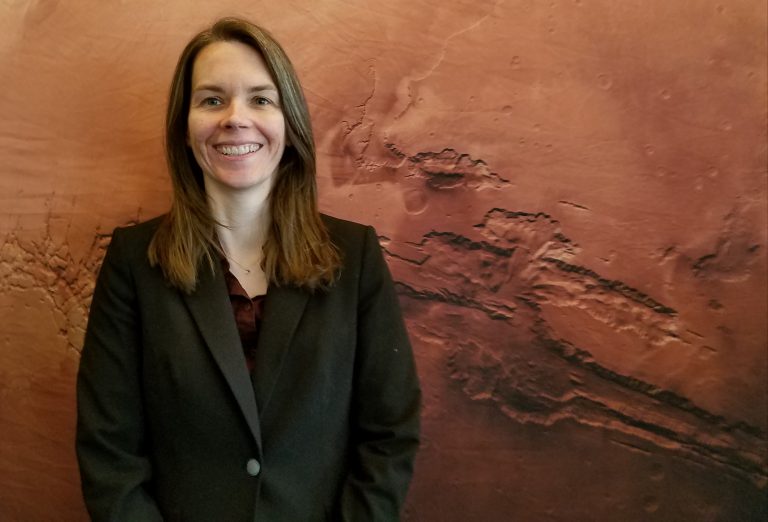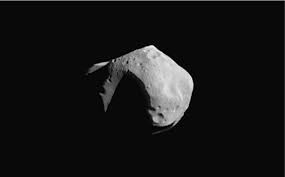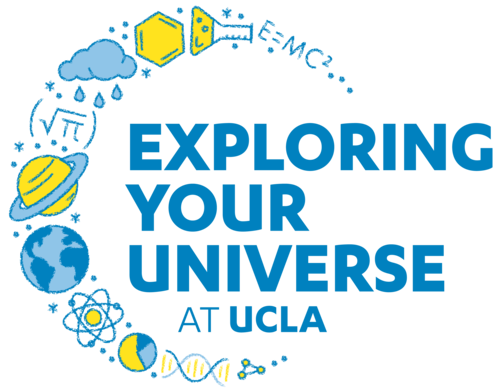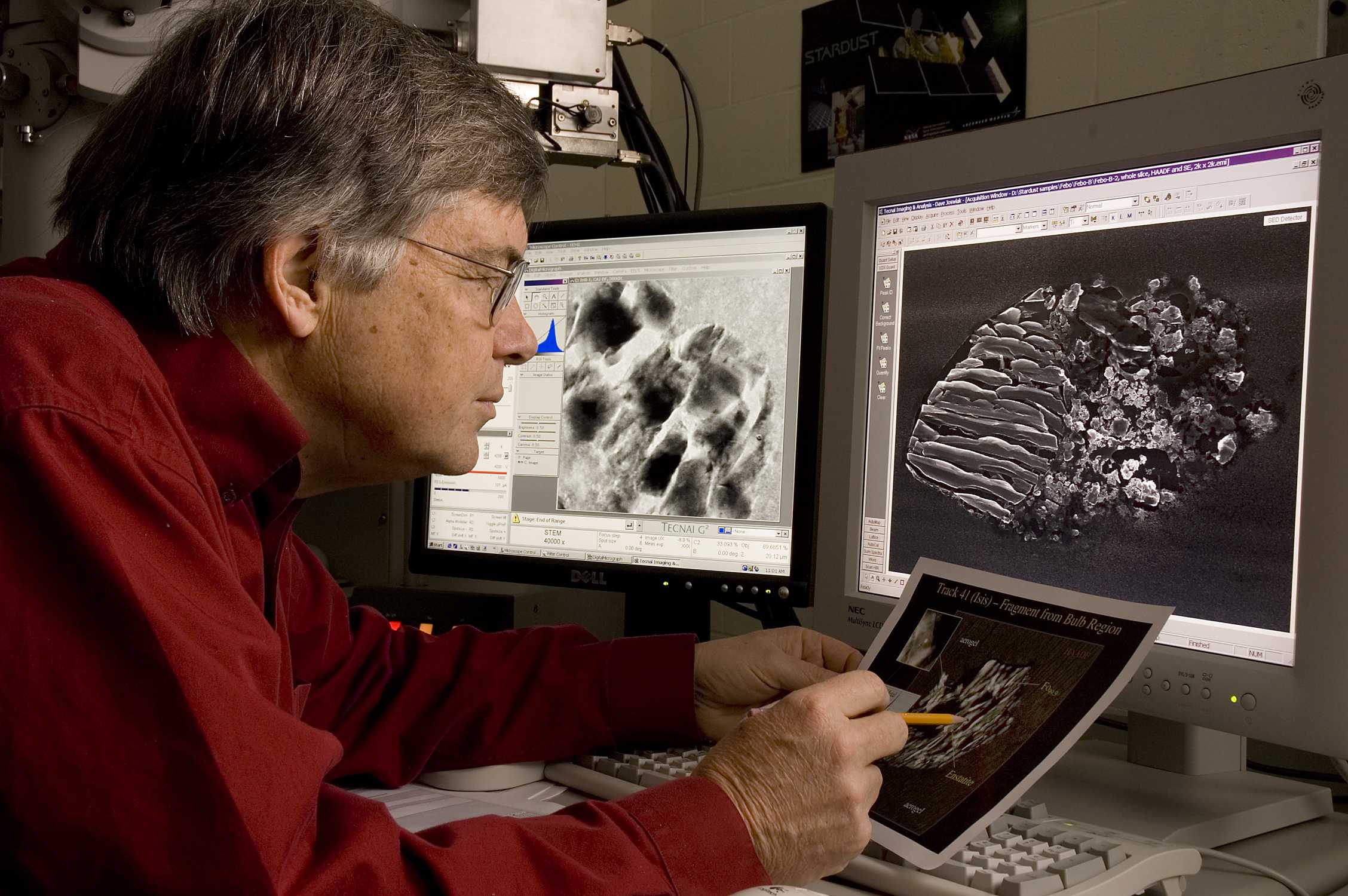Gallery Events
Feb
212021 |
Dr. Tasha Dunn; Colby CollegeIt's getting hot in here: Metamorphism of primitive solar system materialsLocation: https://ucla.zoom.us/meeting/register/tJEqduyupj0vGd3S0_52FsbHTbPjYr0sZQUj Chondritic meteorites represent the most primitive material in the solar system. These chondrites originate from asteroids that did not reach temperatures high enough to melt. Although they escaped melting, some of these primitive asteroids reached temperatures high enough to induce metamorphism - recrystallization of a rock in a solid state. Unlike Earth, where metamorphism is accompanied by pressure and heat, metamorphism on asteroids is driven only by temperature. This metamorphism results in textural and geochemical changes that provide insight into the thermal and physical evolution of small bodies during the solar system's earliest formation. 
|
Jan
172021 |
Dr. Sara Russell; NHM LondonClocks in Rocks - How to date a solar systemLocation: https://ucla.zoom.us/meeting/register/tJEqduyupj0vGd3S0_52FsbHTbPjYr0sZQUj Our solar system was born over four and a half billion years ago, from a cloud of dust and gas called the protoplanetary disk. Examples of the first solids to be formed - calcium-aluminium-rich inclusions (CAIs) and chondrules -have survived in some meteorite samples to learn about these ancient times. In particular, we can determine how old these components are using lead isotopes, which places constraints on the formation time of our Sun and planets. Finer details can be provided by the isotope 26Al, which is a natural clock because it is radioactive and its abundance declines by half every 3/4 of a million years. By looking at how much of this isotope was present in each object when it formed we can therefore tell how old it is. However, this chronometer depends on knowing how much 26Al originally existed in the disk and how it was distributed. If we can work these details out, then we can use these data to determine the length of time it took to make CAIs and chondrules, and from this we can work out how long the dusty disk took to start to form planets. 
|
Nov
152020 |
Dr. Adrian Brearley; UNMChild’s Play- Fun and Games with Mud and Goo in the Early Solar SystemLocation: Registration: https://ucla.zoom.us/meeting/register/tJEqduyupj0vGd3S0_52FsbHTbPjYr0sZQUj The carbonaceous chondrite meteorites contain a diverse array of early solar system materials. Among the most challenging of these materials to study is the very fine-grained, so called 'matrix' of these meteorites. In this presentation, I will discuss the evolution of our understanding of these fine-grained materials and what they tell us about early solar system processes. In particular, I will focus on the fine-grained silicate mineral component of pristine carbonaceous chondrite matrices - the 'mud' and its intimate relationship with organic carbonaceous matter, the 'goo', to illustrate new insights into the behavior of water and organic matter in the early solar system. The significant advances that have been made in studying these materials is also a remarkable demonstration of the development and application of state-of-the-art micro and nanoanalytical techniques to study extraterrestrial samples. These include the precious samples of carbonaceous asteroids that are on their way back to Earth carried by the JAXA Hayabusa 2 and NASA OSIRIS-Rex sample return missions. 
|
Nov
12020 |
UCLA Meteorite ScientistsExploring Your Universe 2020Location: https://hopin.to/events/eyu This is a FREE event for visitors of all ages and scientific backgrounds. Exploring Your Universe was founded in 2009 by graduate students in UCLA’s Astronomy department, and is now organized by volunteer graduate students representing several UCLA departments. As the largest science outreach event on campus, this event is made possible by volunteers from student groups, departments, and faculty across all science disciplines. This year there will be no physical event held on UCLA’s campus. We will be going VIRTUAL! We have built a virtual platform specially for this event in order to curate an immersive experience that includes a combination of interactive booths, demonstrations, live speakers, and Q&A panels. Copy and paste the link in your browser to reach the registration page so that you can join us anywhere in the world on Nov. 1st! The UCLA Meteorite Collection is hosting a booth with EYU which includes includes live lectures from 12-5 p.m. including a Q&A with Meteorite Scientists from 4-5 p.m. on November 1st. 
|
Oct
182020 |
Dr. Donald BrownleeThe Golden Age of Sample Return Missions from Space: What comet samples have told us about the origin of the solar systemLocation: https://ucla.zoom.us/meeting/register/tJEqduyupj0vGd3S0_52FsbHTbPjYr0sZQUj In the past 15 years, space missions have returned samples of the Sun, a comet and an asteroid for detailed study by state-of-the-art methods in laboratories around the world. Samples from two additional asteroids are being returned by current missions and return missions from the Moon and Mars are planned. Starting 30 years after the last Apollo lunar mission, some have called these new missions the Golden Age of post-Apollo sample return missions. In this talk, I will describe the Stardust mission and how the ancient rocky materials it returned from an active comet have given us important new insight into the formation of icy-bodies near the edge of the solar system. Just as Moore’s Law led to vast improvements in our computers, analogous advances in microanalytical methods have led to unprecedented capabilities for studying extraterrestrial materials. In the case of comet samples, the analyses have found abundant rocky materials that formed at incandescent temperatures, probably in the inner solar system. Such materials were profoundly unexpected components in a body whose ices formed at cryogenic temperature. Their presence in comets is evidence of large scale transport of rocky materials from the hottest regions of the early solar system to its coldest parts. 
|